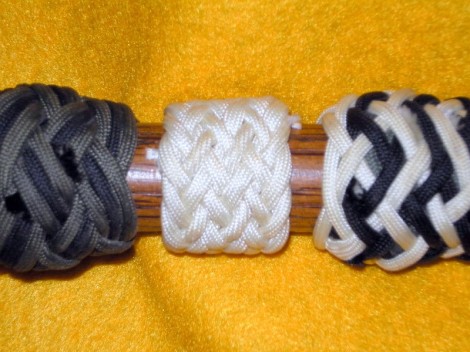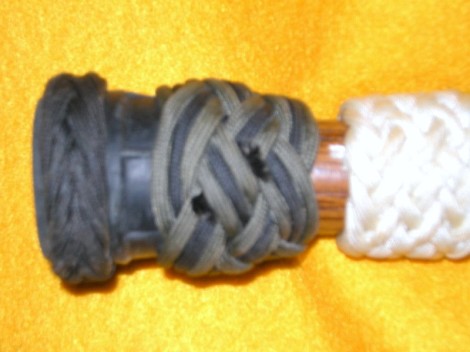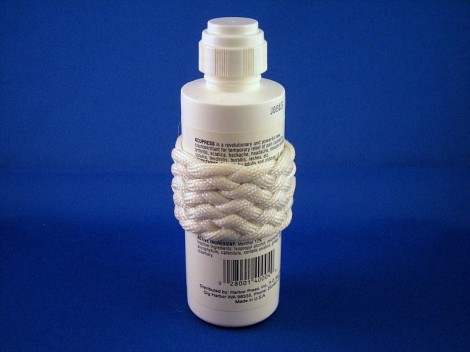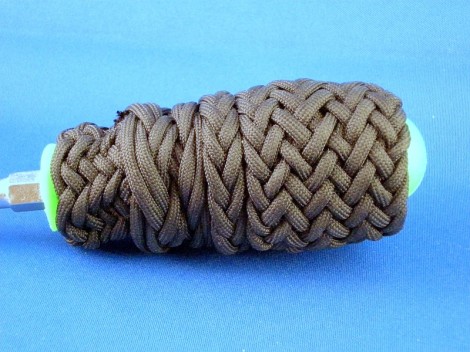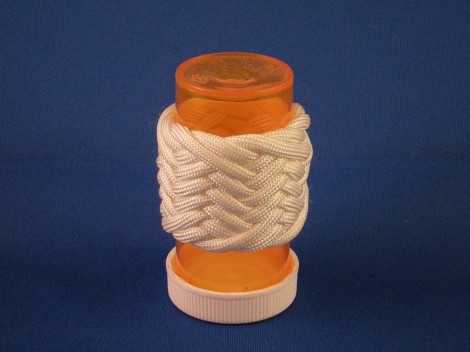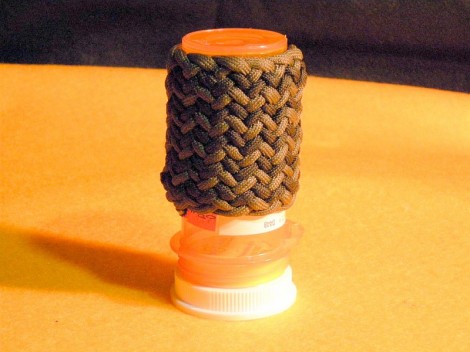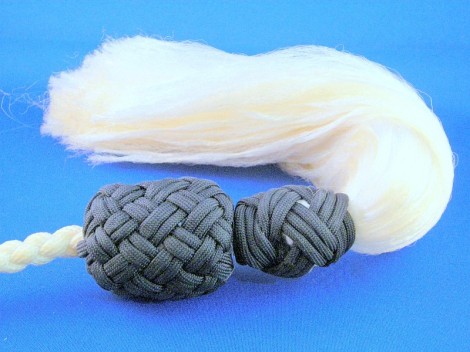
Turk's Heads grace the head of a tassel -- making a fine pull cord.
I am tasked with tying knots every day as a form of physical therapy. No matter how much you like knots, you start running short of new projects. One day I saw My Lady Rose trying to reach the door of a high cabinet, and was inspired to make a pull cord. That way she can at least open the cabinet and ensure the thing she wants is there before commencing the acrobatics of getting it down. Or calling for her tall person to get it for her. I’ll give you 2,438 guesses who that is — not that I mind. She just hates to impose on me. The end result is this pull cord.
The knots used in this project are:
I first took two lengths of a Kern-Mantle utility cord, and after middling them, I braided a 4 strand round sinnet. I put a constrictor knot on the ends to prevent unraveling. Below the constrictor I stripped off the outer covering and combed out the inner strands. Too thin of a bundle to make the tassel, but a start.
I then took several strands of the same cord and gutted them to get the core strands. I middled them and laid them alongside the braid so that the center was slightly above the constrictor knot, making sure they were evenly distributed around the core. I then seized them to the braid just above the knot with another constrictor knot.
Using a piece of the same utility cord, I made a 3 Lead X 4 Bight Turk’s Head to act as a mouse. After hanging the braid, I let the top strands fall down over the Turk’s Head and the inner strands. Just below the Turk’s Head I clapped on another constrictor knot. I now had a tassel with a small bulb-shaped head and uneven strands.
To dress the head of the Tassel I put on a Turk’s Head of 5 Leads X 3 Bights, tripled with black paracord. I left the weaves slightly open so that the head of the tassel peaked through.
I then combed out the strands and cut them off evenly. I thought I was done.
After some thought, I decided it needed a hand grip to take the strain, rather than letting it fall on the tassel. I then tied a series of unseen and unsung Turk’s Heads to mouse out the hand grip. The covering knot on the hand grip is a Turk’s Head of 9 Leads X 8 Bights, doubled in black paracord. Because this was to be the grab spot, I didn’t leave any exposed white strands. I haven’t the foggiest idea in all of Hades — how do you wash a tassel?
To give you some scale, the tails on the tassel are about 10″. The largest black Turk’s Head is 2″ tall, and about 1 3/4″ wide.
This pull cord had been giving yeoman’s service for about 11 years when the picture was taken. It is showing some wear, and some staining, but is still serving. In the passing years I have researched, and carefully considered, the problem of washing. It still has me baffled.
And now, a question for the scientists, philosophers, or really smart people in the audience. Why do the synthetics they make these cords out of attract some types of soil/stains. Could you by careful selection of fibers make an air filter which targeted specific pollutants?
Thank you for coming by my site. Come back again; I’ll try to keep things quick-stepping along the route of march:
William
